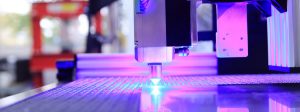
A Different Kind of Vaccination
Carbon® is a 3D printing technology company based out of Redwood City, California with the aim to help businesses develop better products in less time required. Its innovators are looking into a new technology that may change the way we do vaccinations.
As we all know, during this pandemic, vaccination is all the talk everywhere. For those for or against it, a majority know just how vaccines are administered. The vaccines in liquid form are kept in vials that need refrigeration or freezing to keep its potency intact. The formula is aspirated by a syringe and which then is injected into a person. Hence, vaccines necessitate cold storage and a professional to inject it. Carbon has come up with vaccine patches consisting of microneedles that are coated with the vaccine that dissolves into the skin.
Microneedles
Microneedles are not new and have been studied before. It is 3D printing that enables the creation of the blueprint that molds the microneedles. It is clear that these patches offer great flexibility and improve timelines. As traditional vaccines go by which the drugs produce antibody response, the use of these patches, when studied in animals, resulted in many times an antibody response. Hence, it can also be possible to administer smaller doses to get the same therapeutic response.
Over at Carbon, researchers are now exploring the possibility of 3D printing mRNA vaccines which were the vaccines of Pfizer and Moderna. Carbon may also be able to push the commercialization of the technology, producing these patches large-scale and getting them ready in less time. Incidentally, it was also Carbon that 3D printed nasal swabs that proved to perform better than traditional swabs. It still needed to be approved and marketed, but its potential is quite enormous.
In due time, vaccine delivery by Carbon can change the way we administer vaccines, be it for the Covid pandemic or other types of diseases that vaccines can arrest. The upcoming technology has a lot of promise by way of cost, producibility, and time save. Also, it’s going to spell a lot of profits for the 3D printing industry.



